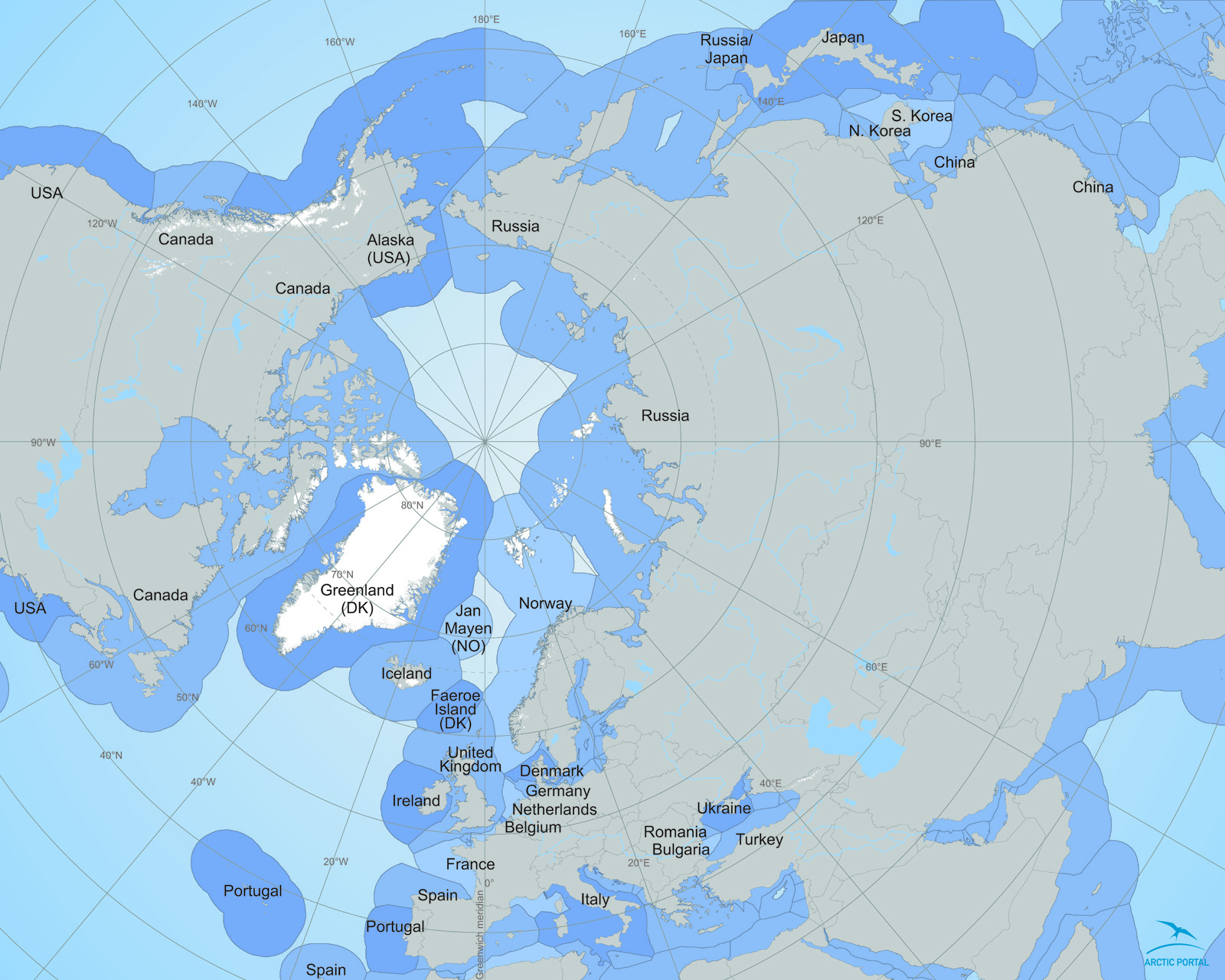
Coastal states have their maritime zones where they have exclusive access to all resources. The map on the right shows these zones.
The zone stretches from the seaward edge of the state's territorial sea out to 200 nautical miles from its coast (370,4 km). The states have the rights to fish in the EEZ, but also many duties, like preventing overfishing and pollution.
Fisheries conservation and management authorities, most frequently a Ministry of Fisheries, often make use of the following substantive standards:
- Restrictions on catch and effort, for instance by setting the total allowable catch (TAC) and allocating the TAC by means of national quotas.
- Minimum size limits for target species.
- Maximum by-catch limits, for instance in terms of the number of individuals (e.g. in relation to marine turtles and marine mammals) or as a percentage of the target catch.
- Technical measures, for instance minimum mesh sizes, by-catch mitigation techniques (e.g. turtle excluder devices, bird-scaring lines).
- Spatial measures (e.g. closed areas) aimed at avoiding catch of target species (e.g. nursing and spawning areas) or non-target species (e.g. important feedings areas) or avoiding impact on sensitive habitat (e.g. cold water coral reefs).
There are numbers of intergovernmental bodies who are relevant to fisheries in the Arctic.
The two biggest ones are perhaps the Food and Agriculture Organization of the United Nations (FAO) and the United Nations General Assembly (UNGA).
The Fisheries and Aquaculture Department of FAO has the vision of "a world in which responsible and sustainable use of fisheries and aquaculture resources makes an appreciable contribution to human well-being, food security and poverty alleviation."
It´s mission is "to strengthen global governance and the managerial and technical capacities of members and to lead consensus-building towards improved conservation and utilization of aquatic resources."
The UNGA has many agreements related to the oceans, like the United Nations Convention on Law of the Sea and the Agreement on High Seas Fishing, relating to the conservation and management of straddling fish stocks and highly migratory fish stocks.
Read more about the agreement here on the Arctic Portal website.
At the regional level, there are a number of RFMO´s and bilateral or regional organizations/arrangements whose spatial scope overlaps to some extent with the Arctic marine area.